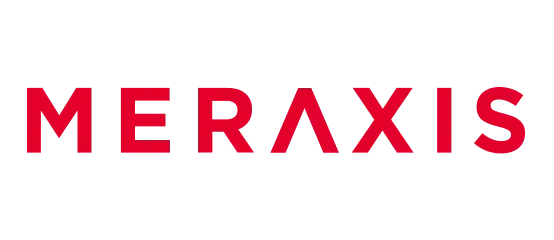Choosing the right strategy depends on business criticality, compliance, and resources. Many organizations apply a portfolio mix of modernization strategies.
We invite you and your team to a 30-minute free consultation workshop with our experts on this matter. They’ll listen to the issues you’re facing with your current legacy system, and they’ll propose the perfect solution. Schedule now!
Intelligent Application Modernization Assessment
Before implementing modernization strategies, organizations must assess their current applications against intelligent application requirements. This evaluation helps identify specific modernization needs and prioritize efforts effectively.
Key assessment questions include evaluating whether existing user interface technology can support variations in form factor, modality, and experience. Additionally, organizations must determine if current systems can interact with desired AI services and whether business logic can be exposed as discoverable, composable services.
The assessment should also examine whether existing business services are composable and whether legacy application data is currently exposed via a data fabric. These evaluations guide modernization decisions and help organizations choose appropriate strategies.
According to Gartner's 2023 CIO survey, 46% of organizations planned to increase spending on application modernization, making it a top technology budget priority. Meanwhile, a Forrester survey found that 64% and 55% of organizations, both enterprises and SMBs, think that modernizing legacy apps is very important.
Modernization Solutions and Technologies
Cloud migration represents the cornerstone of most modernization initiatives. Amazon Web Services (AWS), Microsoft Azure, and Google Cloud Platform (GCP) provide comprehensive services that support various modernization strategies and intelligent application development. These platforms offer managed databases, serverless computing, and advanced analytics capabilities that transform application performance and scalability.
Containerization technologies like Docker and Kubernetes enable organizations to package applications with their dependencies, ensuring consistent performance across different environments. Similarly, these tools simplify deployment processes and support automated scaling based on demand, essential capabilities for intelligent applications.
Microservices architecture breaks monolithic applications into smaller, independent services that can be developed, deployed, and scaled separately. This approach enhances development agility while improving system resilience and maintainability, supporting the composable architecture characteristic of intelligent applications.
Real-World Use Cases and Success Stories
Modernization finds its use in many industries, including:
- Financial services: Modernized banking apps now support real-time payments with cloud adoption and application modernization tools.
- Healthcare: Providers modernize EHRs via hybrid cloud and private cloud, integrating AI-powered diagnostics and automation.
- Manufacturing: Intelligent ERP systems use cloud computing and application modernization patterns to optimize production and quality control.
Key Signs Your System Needs Modernization
Several indicators signal when legacy application modernization becomes necessary. Outdated technology stacks present the most obvious warning sign. Applications running on unsupported operating systems, obsolete programming languages, or end-of-life databases create security vulnerabilities and limit integration possibilities.
High Maintenance and Support Costs
High Maintenance and Support Costs drain IT budgets and prevent innovation investments. Older systems require specialized, expensive expertise to maintain, plus frequent updates and patches. When maintenance costs exceed the business value delivered, modernization becomes economically justified.
Security Vulnerabilities
Security Vulnerabilities expose organizations to significant cyber risks. Legacy systems use outdated security protocols and encryption methods, making them attractive targets for cybercriminals. Additionally, they lack regular security updates and cannot support modern threat detection or automated patching capabilities.
Poor Performance and Frequent Downtime
Poor Performance and Frequent Downtime directly impact business operations and revenue. Outdated systems struggle to handle increased data volumes and user traffic, resulting in slow performance, long loading times, and frequent crashes. This creates operational delays and frustrated users while limiting growth potential.
Lack of Scalability and Flexibility
Lack of Scalability and Flexibility prevents organizations from adapting to changing business needs. Legacy systems cannot accommodate growth or integrate with new technologies and platforms, limiting future innovation opportunities. Modern systems offer the scalability required for intelligent application characteristics.
Incompatibility with Modern Technologies
Incompatibility with Modern Technologies creates integration challenges that hinder digital transformation efforts. Outdated systems cannot connect with new software, hardware, or cloud-based solutions, increasing complexity and preventing organizations from leveraging cutting-edge capabilities like AI services.
Outdated User Experience
Outdated User Experience frustrates employees and customers with clunky, inefficient interfaces. This leads to decreased productivity, lower employee morale, and poor customer satisfaction. Moreover, legacy interfaces cannot deliver the adaptive, personalized experiences that intelligent applications provide.
Difficulty Integrating with Other Systems
Difficulty Integrating with Other Systems creates data silos and collaboration barriers. Legacy applications weren't designed to work with modern platforms, leading to inefficiencies, inaccurate data, and missed innovation opportunities. This prevents the connected data capabilities essential for intelligent applications.
Compliance Risks
Compliance Risks expose organizations to legal and financial penalties. Outdated systems may not meet current regulatory requirements, particularly emerging AI governance standards. Modernization ensures compliance with evolving regulations while supporting intelligent application security frameworks.












